Unravelling sweaters is a great way to get ahold of yarn that is expensive or hard to find new. My absolute favorite yarn to recycle from sweaters is cashmere. There are a few things that make unravelling a cashmere sweater a bit trickier than other sweaters, but it is still very much worth the time it takes.
Choosing Sweaters
Cashmere sweater that are good for unravelling can take a bit of a search. You want a sweater that has clear stitch definition, making it much more likely that it has multiple strands of yarn. The more strands, the easier (and faster!) it is going to be to unravel, with less chance of breakage. Avoid sweaters that are at all felted, they will be almost impossible to unravel. On the other hand, small holes and stains can be worked around (just unravel and discard that section of yarn).
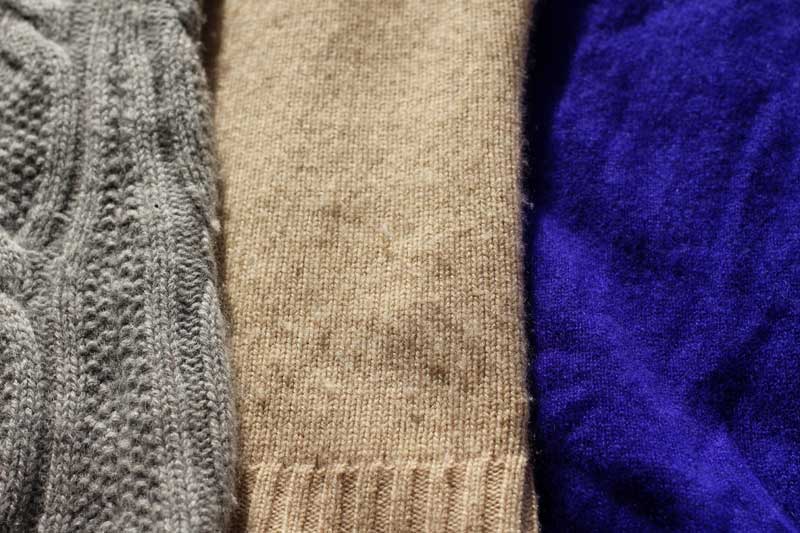
The sweater on the left is great for unravelling- loosely knit, not felted, and knit from multiple strands. The middle sweater is ok for unravelling (it is the sweater in the other pictures here)- it was made up of 2 strands of cashmere, the thinnest I will go. The bright sweater on the right is not great for unravelling- it has minimal stitch definition and appears to be made up of just one strand of cashmere, which would likely lead to quite a bit of breakage as I wound the yarn.
- Pullovers are often easier to take apart and wind than cardigans- the fewer pieces, the less chance of cutting the wrong yarn.
- If you have a choice of sweaters, go for the biggest sweaters you can find.
- I can usually find sweaters to unravel for $5 (or less) at the thrift stores near me. They generally have small imperfections or are very dated styles- not a problem since I am unravelling them anyways.
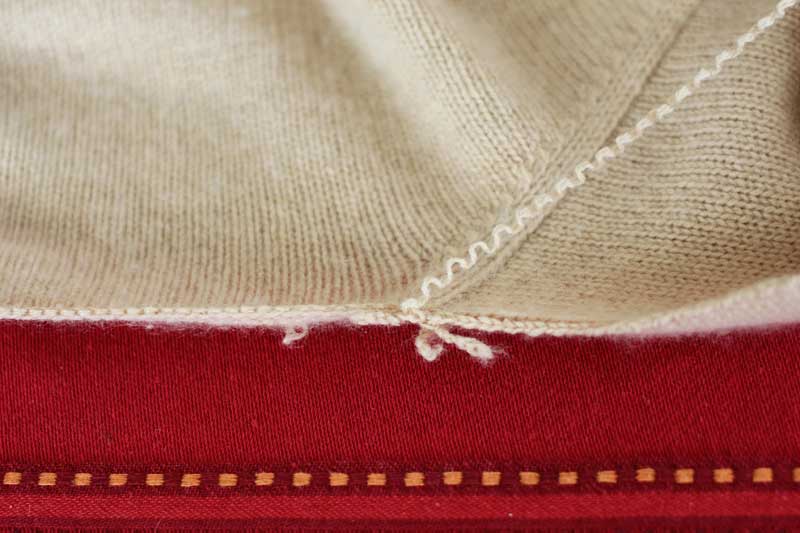
Finding the Ends
Depending on how the sweater is joined, some seams will be easier to take apart than others.New to unravelling sweaters? There are lots of tutorials out there, but cashmere comes with a caveat- don’t cut the seams with abandon! Go slow, and use the sharpest/smallest scissors you have. Cashmere strands are thin enough you will end up cutting more than just the seam thread if you aren’t careful, and you want to avoid having to tie too many knots.
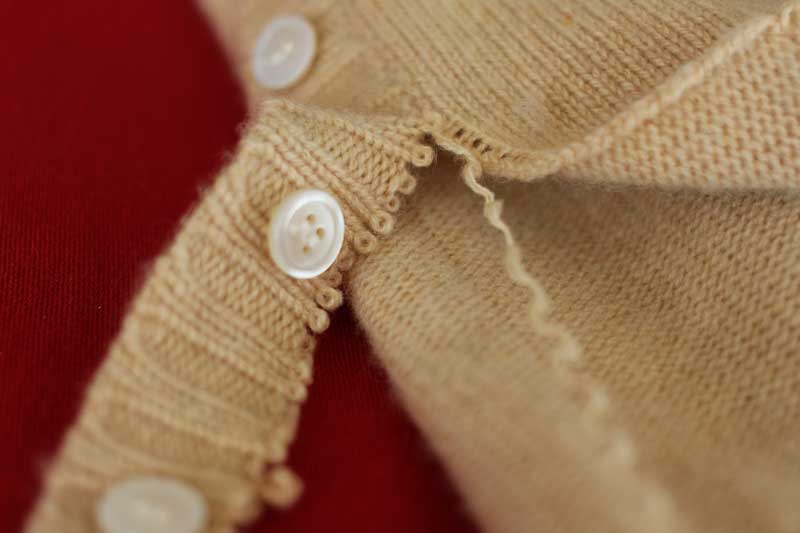
If you find that the seam thread doesn’t want to “unzip” try working from the other end of the seam- often, the hardest (and most time consuming!) part is finagling the seam thread to get it to unzip. Once you have found the right section of yarn, it will often unzip quickly, like this (video link). The yarn joining the seam will usually be either a strand of the same cashmere as the sweater or a matching thread. Cross your fingers it is a matching thread- it is usually stronger, making it easier to tug on to unravel the sweater.
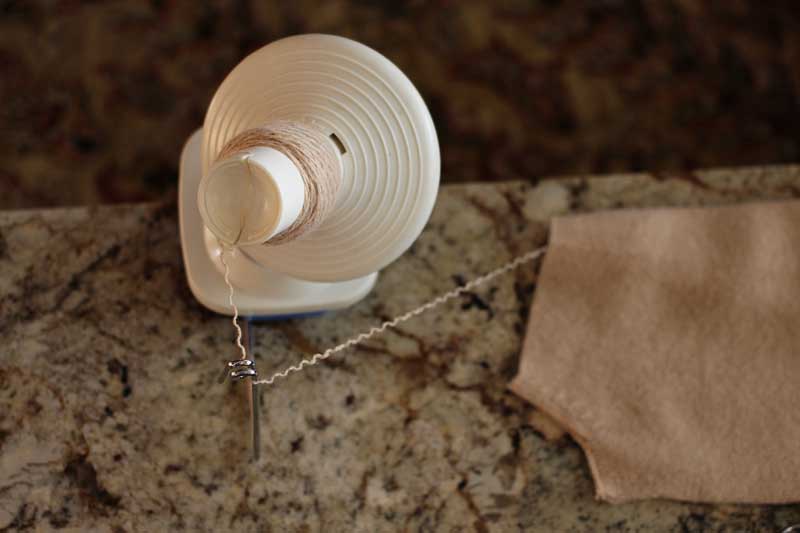
Winding
The key to winding the yarn is to go slow- tugging or the yarn getting stuck can break the delicate cashmere. Wind each section of yarn by hand or on to a ball winder, making a new ball for each new strand of yarn. Don’t try and unravel and wind multiple strands at once- it is a recipe for tension disaster. Once all of the yarn is wound in to balls you can skein for dying, wind multiple strands together, or spin and ply to create a thicker yarn. I don’t usually bother to skein and wash the yarn first for quick projects- this leaves my yarn with a bit of uneven texture once blocked. If you are planning on something with a smooth surface (i.e. a stockinette project) you would want to block the skeins first.
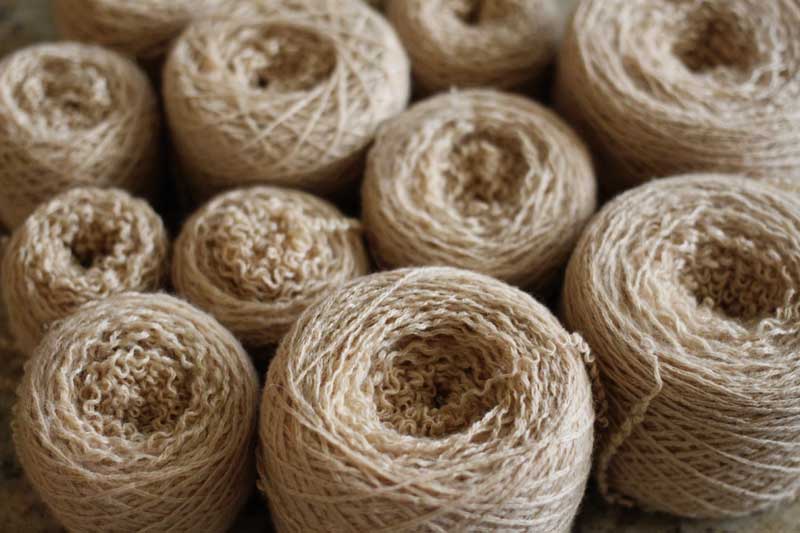
When I wind multiple strands together, I try and stagger the size of each ball so that the knots I tie when joining new balls are spaced out.
Making
I unravel a sweater or two at a time and use the yarn as I go along, stockpiling some of it if I have plans for a larger project. My absolute favorite thing to make with recycled cashmere yarn is blankets. This requires a LOT of cashmere, so in the meantime I use the yarn to make smaller projects:
- Hats, and the inside hem of hats (I use a sock weight cashmere for most inside hems to minimize bulk).
- Wrist warmers
- Baby booties
Bits and Bobs
- Most of the cashmere sweaters I unravel have between 2 and 4 strands of yarn. If you are planning a big project, unravel all of the sweaters first, then decide how many strands you are going to knit with – you can separate and recombine the strands to get the thickness you want, but it is a pain.
- If you plan of dyeing your yarn, dye is after the sweater is unravelled and wound in skeins; otherwise you risk felting the yarn and not being able to unravel it!
- The short bits of yarn you have leftover can be carded in to funky art yarn batts if you spin. Otherwise, for cashmere and wool yarns I cut them up in to smaller pieces and put them in my compost or use them in stuffing.
- Watch out for the edgings on your sweaters- sometimes the cuffs and button bands are made from a more tightly plied yarn or have a different number of strands.
- For knitting bulky yarn weight projects, I prefer to spin and ply the multiple strands of cashmere together- this takes quite awhile to do, but makes it much easier to knit with.


